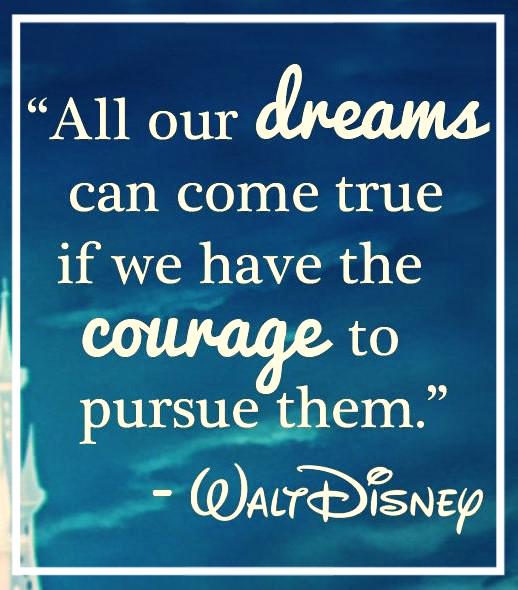 Do you ever feel paralyzed in making a decision?
Do you ever feel paralyzed in making a decision?
Or, just not sure what to do next.
Well, have a simple check in with yourself about the goals you’ve set, what you’ve accomplished so far, and what more you need to do. Then determine what’s getting in the way of moving forward or accomplishing your goals.
Many times, feeling “stuck” can come from fear created in your mind.
Fear is natural and can even be a good thing. So it’s your reaction to fear that impacts whether you easily move toward your goals or not. In order to surmount your fears and get “unstuck,” you have to tune into, identify, and understand them. Then you can more effectively address them and continue taking steps toward your goals.
When you look at fear more closely, you’ll notice it can actually be an indication that you have something interesting and exciting going on in your life.
Fritz Perls, a psychologist and the founder of Gestalt therapy, explained, “Fear is excitement without the breath.” In fact, fear is defined as thoughts of negative expectations, while excitement is thoughts of positive expectations.
You have the power to choose your expectations for a certain situation and therefore can shift the feeling of fear to excitement.
Unfortunately, choosing positive expectations can feel difficult sometimes because it goes against our human nature. In early times, humans learned to scan their environment for dangerous predators. These days, we’re not in the same life-threatening situations, but our brain still operates in the same way, often scanning for danger. PhD Rick Hanson even notes in his research results that science shows our brains are like “Velcro for negative experiences and Teflon for positive ones.”
Therefore, benign situations, like a conversation with upper management or giving a speech in front of coworkers, might feel “dangerous.” That feeling may stem from our innate human nature. We’re programmed to remember past experiences where we might have associated a negative expectation—failure and judgment—with those situations. But we need to remember that these fears are just thoughts wandering through our minds; they’re not truths.
So, have courage. Face your fears. And, take that step toward what you want in life.
Having courage is important especially if we can’t make that mental shift toward a positive expectation right away. I know this approach to have courage can seem overly-simplified. So, for some motivation, I like to think about what Mark Twain said…
“Courage is resistance to fear, mastery of fear—not absence of fear.”
This quote is a great reminder that your fears might not go away completely, but you have to work with these perceived obstacles to get what you want. Courage can come in many forms and takes training and effort. Here are four techniques that can be used in almost any situation to transform your fears into positive energy and move you closer to achieving your goals:
Take a Deep Breath
- Your body doesn’t lie. If you notice shallow breathing, you’re probably feeling fear of some sort. Being aware of how your body feels can help you mitigate the fear. And it’s easier to change how your body is reacting to a situation than to change your thoughts. So take a deep breath (or two or three) until your breathing becomes more regular. Then you’ll be in a better position to move forward.
Identify the Truth
- You most likely have beliefs (established over time) that drive your fears. These beliefs aren’t necessarily truths but they reinforce a fear of potential failure in some area of your life. For example, you may have a belief that only people with MBAs can start and run a business. Any time you pursue your entrepreneurial desires, your fear sets in and you unknowingly sabotage your efforts.
- Take time to look at your beliefs around an area of life where you seem to be stuck or a goal you can’t seem to achieve. Separate the truth within that belief from the lie that may be holding you back. Yes, it can be helpful to have an MBA to start your own business, but the truth is that your education and experience would be enough to allow you to follow your entrepreneurial dreams. This analysis can help you shift an expectation of an experience from a negative one to a neutral or even positive expectation.
Lean into Trust
- At some point, you need to believe that you have everything you need to succeed and trust yourself to do so. You’ve probably had moments where you simply and even unknowingly trusted yourself to do something—give a speech, deliver a sales pitch, or even get through a tough new exercise in your fitness class. You didn’t judge yourself, asking if you sounded okay while giving the pitch or wondering if your body would be able to accomplish the exercise. You just trusted your mind and body to make it happen. With practice and confidence, you can get to this trusting mind-set in other areas of your life, too, where fear might exist.
Take Action
- Ultimately, the best way to combat fear is to take action. Any action. For example, a new entrepreneur could just research how to write a business plan. With this small step, you’ll boost your confidence and the belief driving your fear will begin to diminish. It might not be completely gone, but you’ll have taken a step closer to associating a positive outcome with your potential experience.
With a better understanding of your fears and how to “be with” them, you’ll be better equipped to move forward again with what you want in life. So, hope you feel further inspired to go for your dreams!







